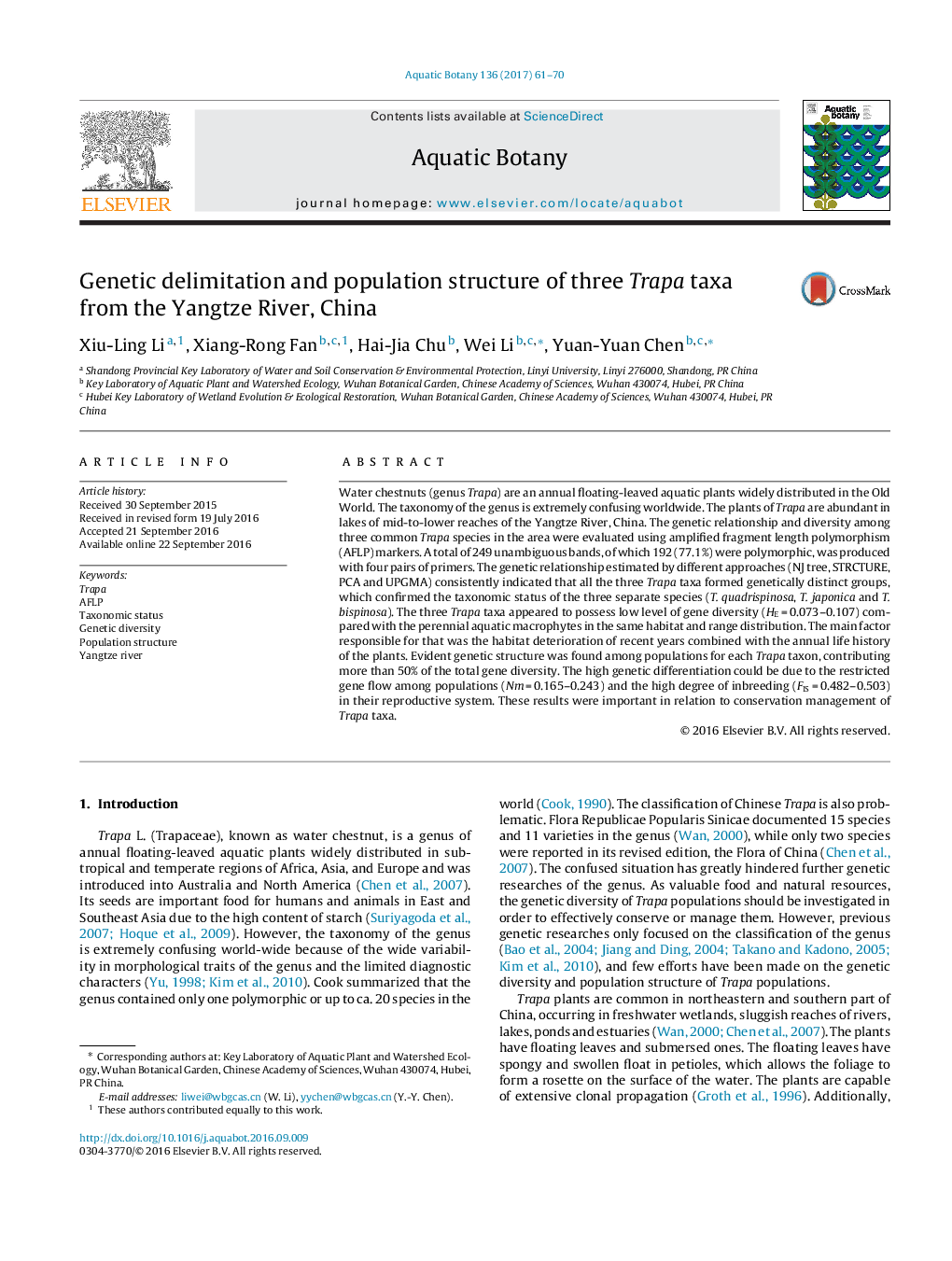| Article ID | Journal | Published Year | Pages | File Type |
|---|---|---|---|---|
| 4527523 | Aquatic Botany | 2017 | 10 Pages |
•Water chestnut Trapa is abundant in lakes of mid-lower reaches of Yangzte River.•Three taxa (T. quadrispinosa, T. japonica and T. bispinosa) were analyzed with AFLP.•The three Trapa taxa formed genetically distinct groups.•Genetic depauperation and evident population structure were found within each taxon.•Each taxon should be separately preserved based on genetic and geographic origin.
Water chestnuts (genus Trapa) are an annual floating-leaved aquatic plants widely distributed in the Old World. The taxonomy of the genus is extremely confusing worldwide. The plants of Trapa are abundant in lakes of mid-to-lower reaches of the Yangtze River, China. The genetic relationship and diversity among three common Trapa species in the area were evaluated using amplified fragment length polymorphism (AFLP) markers. A total of 249 unambiguous bands, of which 192 (77.1%) were polymorphic, was produced with four pairs of primers. The genetic relationship estimated by different approaches (NJ tree, STRCTURE, PCA and UPGMA) consistently indicated that all the three Trapa taxa formed genetically distinct groups, which confirmed the taxonomic status of the three separate species (T. quadrispinosa, T. japonica and T. bispinosa). The three Trapa taxa appeared to possess low level of gene diversity (HE = 0.073–0.107) compared with the perennial aquatic macrophytes in the same habitat and range distribution. The main factor responsible for that was the habitat deterioration of recent years combined with the annual life history of the plants. Evident genetic structure was found among populations for each Trapa taxon, contributing more than 50% of the total gene diversity. The high genetic differentiation could be due to the restricted gene flow among populations (Nm = 0.165–0.243) and the high degree of inbreeding (FIS = 0.482–0.503) in their reproductive system. These results were important in relation to conservation management of Trapa taxa.
